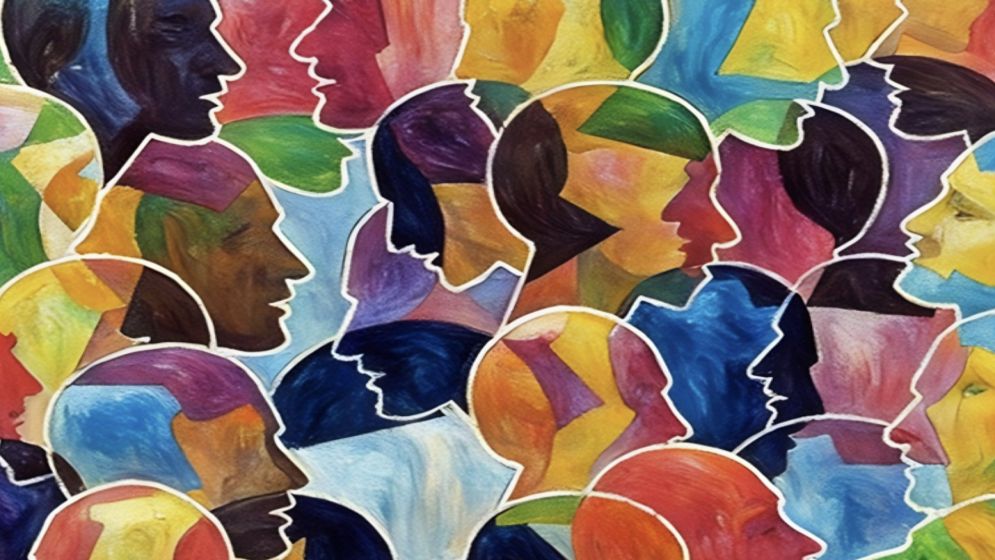How Bangladesh never gained its cultural sovereignty

When Bangladesh broke free from the ashes of East Pakistan in 1971, it essentially declared a renaissance. The people rallied behind the promise of linguistic dignity, political autonomy, and a cultural rebirth that would shake off centuries of subjugation.
But more than five decades later, that dream remains curiously stunted.
Yes, Bangladesh is a sovereign state. But culturally and psychologically the chains have not been broken–they’ve simply been rebranded.
The ghost of colonialism still stalks the corridors of power, the studios of artists, and the syllabi of elite universities. The nation may fly its own flag, but its imagination is still tethered to someone else’s empire.
To understand this, you have to go back to 1817, to the founding of Hindu College in Calcutta. Long before the idea of a Bengali nation took shape, a cultural engineering project had already begun.
British administrators like David Hare and Hindu elites such as Raja Rammohan Roy joined forces to mold Indian minds rather than to liberate them. Hindu College wasn’t a school; it was a factory for manufacturing what Lord Macaulay would later call a class of people “Indian in blood and colour, but English in tastes, in opinions, in morals, and in intellect.”
It worked. Exceptionally well.
The curriculum was a celebration of Shakespeare, Locke, Milton–not as comparative material, but as gospel. Indigenous systems–Persianate governance, Islamic jurisprudence, Sanskrit metaphysics–were either erased or caricatured as relics of a backward past.
“Modernity” was defined by imitation rather than introspection. And imitation, in turn, became aspiration.
From this colonial petri dish emerged the Bhadralok: an English-speaking upper-caste elite that knew how to bow to the Queen while quoting Bacon. They filled colonial offices, sipped tea in European clubs, and became the cultural enforcers of the empire.
Their job wasn’t just to administer the colony; it was to believe in it.
Michael Madhusudan Dutt, the literary darling of the colonial establishment, embodied this transformation. Born into a Bengali and Persianate intellectual milieu, he famously denounced his roots, converted to Christianity, and chose English as his literary weapon.
His early career was celebrated not because he was brilliant, but because he was obedient—to a different canon, a different god, a different vision of civilization.
Nirad C. Chaudhuri, the often-misunderstood Bengali intellectual, had warned of this in his polemic Atma-ghati Bangali (The Self-Destructive Bengali).
He saw the elite’s obsession with Western validation not as evolution but as “civilizational suicide.” His critique, once dismissed as cranky nostalgia, now feels like prophecy.
Bangladesh’s colonial hangover
Today in Bangladesh, the signs are unmistakable. The cultural compass still points outward.
English proficiency remains a marker of status. Indian media saturates the airwaves. Our films, our fashion, even our national conversations about identity seem to be curated elsewhere.
The decolonization of the mind–Frantz Fanon’s great unfinished task–was never attempted, let alone completed.
This is not a call for cultural purism or nationalist myopia. This is a plea for intellectual honesty.
This is because political freedom was the easy part but cultural sovereignty? That’s the war we never fought.
When Bangladesh declared independence in 1971, it broke free from Pakistan–but not from the deeper, more insidious forces that had long shaped its cultural identity. The dream was of a nation rooted in its language, culture, and history.
To grasp how deeply these roots go, one must understand that the colonial project in Bengal was never neutral. It was never just about infrastructure or education. It was about reordering society.
Bengali Muslims, once influential under the Mughal and Nawabi administrations, were quickly marked as threats after the 1857 uprising. British policy punished their perceived association with rebellion and political Islam.
While Hindu elites were being molded into model intermediaries through English education, Bengali Muslims were locked out–by design. The empire saw no use for them in its bureaucratic machinery.
Structural poverty, compounded by restricted access to education, sealed their marginalization.
This wasn’t incidental. It was apartheid by other means–an intellectual and economic bifurcation that elevated the Hindu Bhadralok as the voice of Bengal, while pushing the Muslim majority to the periphery of cultural life.
The partition of Bengal in 1905, its reversal in 1911, and the eventual carving out of East Pakistan were less about neat lines on a map than the long, violent unraveling of a region where class, caste, and creed had been cynically manipulated for imperial ends.
After 1947, East Pakistan became the battleground for yet another cultural imposition–this time from the West. The Urdu language policy was a continuation of the erasure, now dressed in Islamic majoritarianism.
The 1952 Language Movement, often mythologized in nationalist memory, was as much a cultural scream from Bengali Muslims as it was a political statement.
But even that resistance remained intellectually tethered to outside references–fighting one form of hegemony while still echoing another.
Urban East Pakistani elites, particularly in Dhaka, remained culturally loyal to the Tagorean worldview, steeped in Kolkata’s refined Bengali modernism.
Rural, Islamic, and working-class sensibilities–the lived reality of the majority–were largely absent from the national discourse. The cultural capital of the new nation was still being authored elsewhere.
Then came the next pivot.
After the 1965 Indo-Pak War, India abandoned overt confrontation in favor of a subtler, longer game. Its instruments were theatre troupes, book exchanges, scholarships to Santiniketan, curated dialogues, and cross-border film screenings.
East Pakistan’s Anglophone and Bengali-speaking elites were the soft targets. And it worked.
By 1971, the intellectual terrain had already been tilled. India’s military intervention was decisive, yes–but it arrived in a field already seeded with cultural affinity, nostalgia, and aesthetic submission.
When the dust of war settled, it wasn’t just political borders that had shifted. The gatekeepers of post-independence Bangladesh were now fluent in a new language of deference—this time to the cultural guardians of Kolkata.
-687a56bcc0dcd.png)
The cultural aggression
In the decades since, that influence has only deepened. The Indian High Commission in Dhaka became the curator of “friendly” cultural engagement. Scholarships flowed, as did Rabindra Sangeet, Bharatnatyam classes, Satyajit Ray retrospectives, and theatre collaborations.
Kolkata’s cultural exports–once foreign–are now considered native by default. Young Bangladeshis grew up on a steady diet of Feluda, Indrajal Comics, and Rabindranath’s romanticism. To be cultured, even post-independence, meant to look across the border.
By the time the 1990s arrived, Bangladesh had been free for two decades—but the airwaves told a different story.
Indian satellite channels–Zee TV, Star Plus, Sony–streamed into Bangladeshi living rooms with no resistance, no regulation, and no reflection. What began as entertainment quickly became soft occupation.
Bollywood movies weren’t just watched–they became blueprints for romance, gender roles, family dynamics, even product placement. Imported advertising firms from West Bengal began scripting Dhaka’s consumer fantasies.
Weddings echoed Mumbai, not Mymensingh. Urban slang absorbed Hindi phrases without pause. Dhaka newsrooms ran front-page spreads on the diets and divorces of Indian celebrities.
It was quiet annexation—cultural, linguistic, and psychological.
For Bangladesh’s cultural elite, the pilgrimage shifted from London to Kolkata. There, in the cafés and conference halls, they found an updated model of intellectual superiority: Tagorean fluency, the aesthetic confidence of Satyajit Ray, the well-practiced disdain for religious sentiment, and the implicit belief that rural life was meant to be pitied or ignored.
Back home in Dhaka, they reproduced that posture with precision—sidelining Islamic heritage, folk traditions, and the lived realities of the working class as unsophisticated, unworthy of discourse.
Meanwhile, the rest of the country consumed India wholesale. Bollywood love songs blared from rickshaws. Indian soaps set fashion trends. Hindi catchphrases were repeated by schoolchildren who couldn’t yet read Bangla fluently. Even corporate launch events mirrored Mumbai’s choreography, complete with Sanskritized slogans and borrowed rituals. What India offered was aspiration–but stripped of agency.
It’s easy to say this is the natural flow of cultural influence in a globalized world. But this is not reciprocity. It is the continuation of a long and deliberate conditioning. Hindu College was never just a school–it was a machine for manufacturing colonial minds.
Today, India’s cultural institutions, media conglomerates, and literary circuits play that same role. They define what is modern. What is tasteful. What is civilized. And in the process, they erase the space for anything authentically Bangladeshi to emerge with dignity.
What’s lost isn’t just heritage—it’s the possibility of a native modernity. A future not stitched together from someone else’s past.
So, Bangladesh remains politically independent, but culturally colonized. Its ruling class has merely swapped out one set of gatekeepers for another–first London, now Kolkata. They quote Tagore in policy meetings, play Hindi jingles at weddings, and call it progress. It isn’t.
The war of 1971 may have expelled the Pakistani army, but no war was fought to resist India’s slow, strategic cultural annexation.
And until Bangladesh reclaims its own cultural vocabulary–one rooted not in borrowed sophistication but in its soil, its language, its faith, and its full historical memory–its sovereignty will remain performative.
—
Arif Hafiz is a political analyst, cultural critic, and independent columnist.


-687a569cd2100.png)